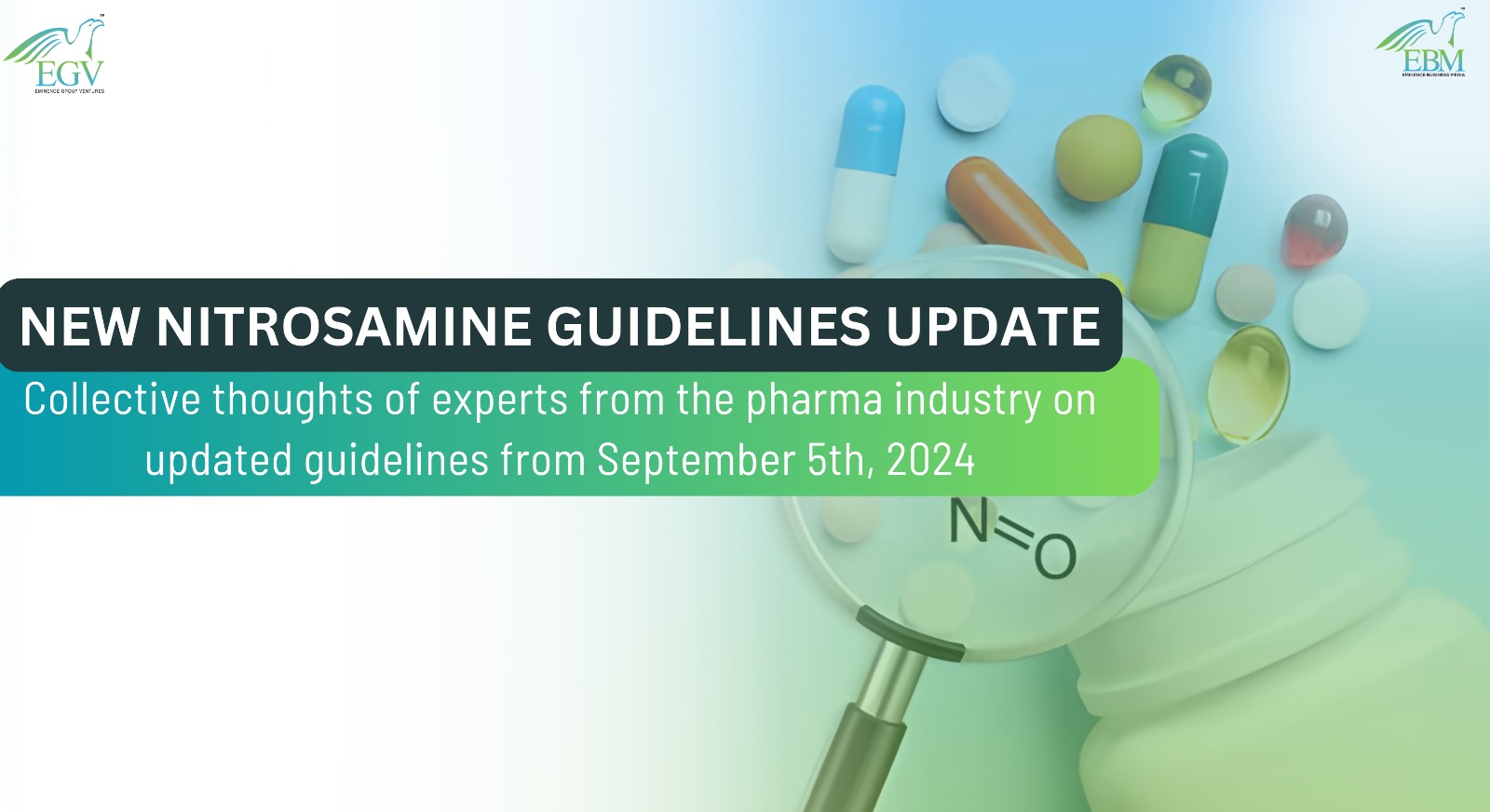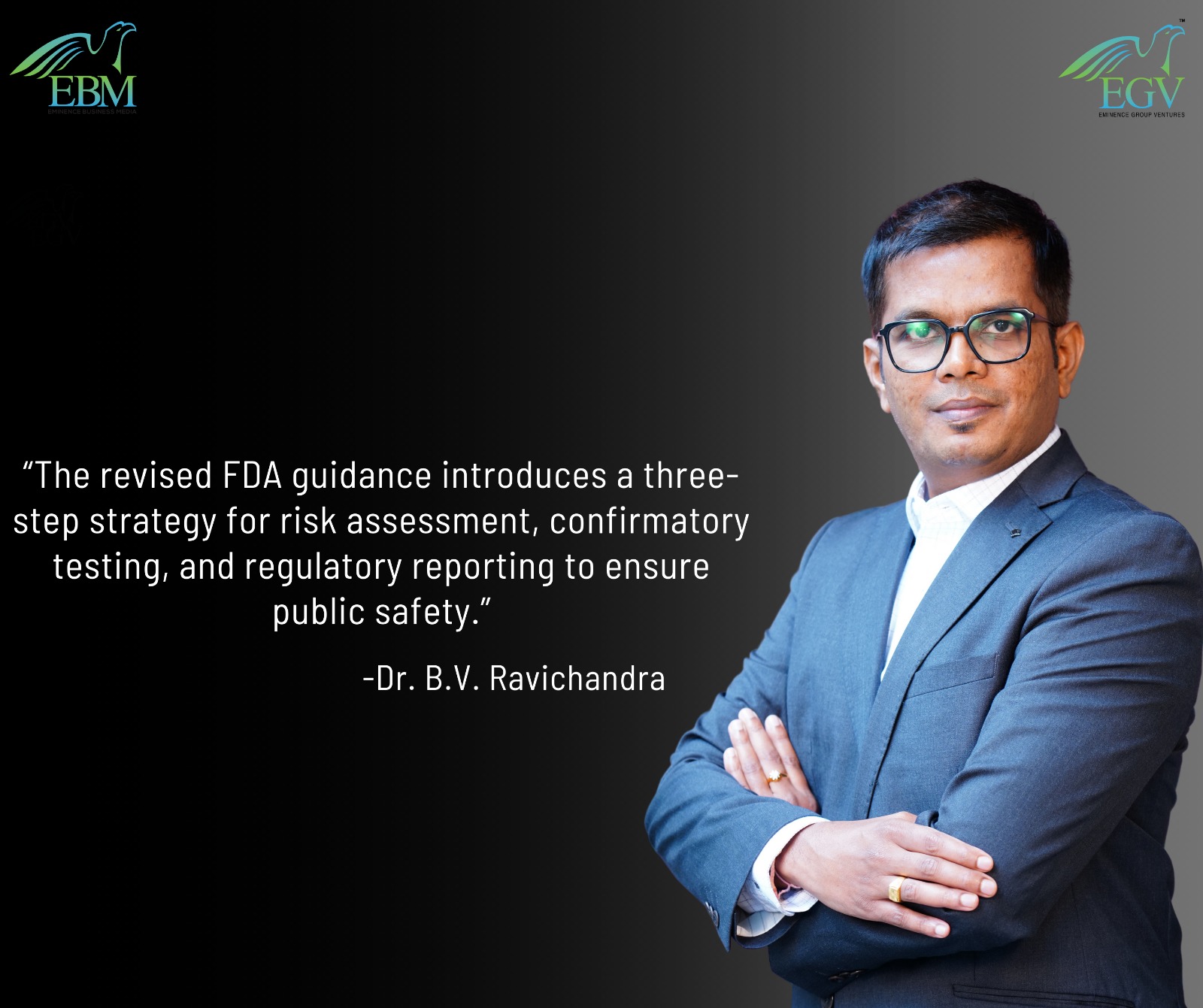
Guarding Against Nitrate Variability and Water Contamination: New Nitrosamine Guidelines Released
In a move that’s shaking up the pharma industry, regulatory bodies worldwide have introduced stricter guidelines on nitrosamine impurities in medicinal products as of September 2024. Nitrosamines, known for their potential to increase cancer risks, can form during drug manufacturing or storage. With these new updates, companies must adopt even more rigorous measures to control these impurities, particularly the complex nitrosamine drug substance-related impurities (NDSRIs).
For Indian companies, this update is a call to action. The stricter regulations could mean significant changes in how drugs are produced, tested, and regulated, with implications that go beyond the lab.
 “The revised FDA guidance on controlling nitrosamine impurities in human drugs emphasizes a proactive, risk-based approach to detect and mitigate nitrosamine risks in both APIs and drug products. It introduces a three-step strategy for risk assessment, confirmatory testing, and regulatory reporting to ensure public safety,” highlighted Dr. B.V. Ravichandra, Head- Global Toxicology & Nonclinical Development, Amneal Pharmaceuticals. He added that “the update includes a focus on nitrosamine drug substance-related impurities (NDSRIs), highlighting the need for manufacturers to assess and control both small-molecule nitrosamines and NDSRIs throughout the drug life cycle. FDA also provided an update on additional safety data required from in vitro and in vivo studies to set the appropriate AI limit,”
“The revised FDA guidance on controlling nitrosamine impurities in human drugs emphasizes a proactive, risk-based approach to detect and mitigate nitrosamine risks in both APIs and drug products. It introduces a three-step strategy for risk assessment, confirmatory testing, and regulatory reporting to ensure public safety,” highlighted Dr. B.V. Ravichandra, Head- Global Toxicology & Nonclinical Development, Amneal Pharmaceuticals. He added that “the update includes a focus on nitrosamine drug substance-related impurities (NDSRIs), highlighting the need for manufacturers to assess and control both small-molecule nitrosamines and NDSRIs throughout the drug life cycle. FDA also provided an update on additional safety data required from in vitro and in vivo studies to set the appropriate AI limit,”
What’s New?
- Nitrate Variability and Water Contamination: A New Focus: One of the critical issues addressed in the September 2024 update is the impact of nitrate variability and water contamination on NDSRI formation. Nitrate levels in water sources can vary significantly, leading to the formation of harmful nitrosamines during manufacturing. This update emphasizes the importance of controlling these variables to prevent contamination.
- Mitigation Strategies for NDSRIs: In light of these updates, pharmaceutical companies must adopt robust strategies to mitigate the risk of NDSRI formation:
- Screening Excipients: Companies should thoroughly screen excipients to identify and eliminate those prone to forming nitrosamines. Add a supplier qualification program and implement advanced analytical methods, such as GC-MS to detect nitrosamine precursors in excipients.
- Incorporating Antioxidants: Adding suitable antioxidants to formulations can inhibit the chemical reactions that lead to NDSRI formation. These antioxidants must be carefully selected and tested to ensure they do not compromise the efficacy or safety of the drug.
- pH Modification: Adjusting the pH of formulations is another effective strategy to reduce NDSRI formation. Stability studies are essential to determine the optimal pH range that prevents nitrosamine formation while maintaining product quality.
- Testing and Risk Assessment: The updated guidelines also stress the importance of rigorous testing and risk assessment to ensure drug safety:
- Confirmatory Testing and Specification Criteria: Pharmaceutical companies must conduct confirmatory testing on finished products to detect NDSRIs. If levels are <10 of AI limit, no specification is needed if the root cause is understood.
- Annual Reporting: Companies are required to submit annual reports detailing the levels of NDSRIs in their products and the effectiveness of their mitigation strategies. Include the confirmatory test results if within 10% of the AI limit. These reports should include data from routine monitoring, deviations from established criteria, and corrective actions taken.
- Timeline for Compliance The timeline for implementing these changes is critical for maintaining regulatory compliance:
- Immediate (0-3 Months): Conduct risk assessments and begin screening excipients.
- Short-Term (3-6 Months): Incorporate antioxidants, implement pH adjustments, and start confirmatory testing.
- Mid-Term (6-12 Months): Finalize mitigation strategies, initiate routine monitoring, and prepare for the first annual report.
- Long-Term (Ongoing): Continuously monitor and adjust strategies based on new data, ensuring ongoing compliance.
 Dr. Shreenivasa Murty, General Manager, Apotex explains the importance of developing scientifically reproducible analytical methods, test results, and intricacy of sample handling during the testing poses a great challenge to the industry for nitrosamine testing. The acceptance criteria when the confirmatory testing is the option following criteria needs to be adopted. If quantitative testing is performed as a routine control, the LoQ should be ≤ of the acceptable limit based on the relevant acceptable intake (AI) for the respective nitrosamine impurity;
Dr. Shreenivasa Murty, General Manager, Apotex explains the importance of developing scientifically reproducible analytical methods, test results, and intricacy of sample handling during the testing poses a great challenge to the industry for nitrosamine testing. The acceptance criteria when the confirmatory testing is the option following criteria needs to be adopted. If quantitative testing is performed as a routine control, the LoQ should be ≤ of the acceptable limit based on the relevant acceptable intake (AI) for the respective nitrosamine impurity;
- If quantitative testing is performed to justify skip testing, the LoQ of the analytical procedure employed should be ≤ 30% of the acceptable limit based on the AI;
- If quantitative testing is performed to justify the omission of specification, the LoQ of the analytical method employed should be ≤ 10% of the acceptable limit based on the AI
The Impact on Indian Pharma
These updates are not just regulatory formalities; they represent a critical shift in how Indian pharmaceutical companies must operate. The enhanced focus on nitrosamines will likely lead to increased production costs as companies invest in better testing, improved manufacturing processes, and more sophisticated risk management strategies.
Moreover, the global nature of these guidelines means that Indian companies exporting medicines will need to comply not only with domestic regulations but also with international standards. This could open doors for those who adapt quickly, positioning themselves as leaders in the global market by demonstrating their commitment to safety and compliance. However, for those slow to respond, the consequences could be severe, including potential market restrictions and reputational damage.
Changes in submission
To comply with the September 2024 nitrosamine guidelines update, Indian companies will need to make several key changes to their current processes. First and foremost, they must revise their risk assessment protocols to align with the CPCA. Furthermore, the newly established acceptable intake (AI) limits require companies to thoroughly re-evaluate all current products and formulations. Comprehensive confirmatory testing and submission of the updated data must be completed by August 1, 2025, to ensure full compliance with these guidelines.
Indian companies must also focus on bolstering their documentation and reporting processes. The submission of comprehensive risk assessments and validation studies by the end of 2024 will be critical to demonstrate compliance with the new guidelines. Failure to meet these requirements could result in delayed approvals or, in the worst-case scenario, market withdrawals. Therefore, proactive engagement with regulatory authorities and continuous updating of internal practices will be essential for ensuring that all submissions meet the stringent standards outlined in these new regulations
 The Road Ahead
The Road Ahead
As Indian pharmaceutical companies grapple with these updates, the need for industry-wide collaboration and knowledge-sharing becomes more critical. The upcoming Pharma Impurity Conclave 2024 offers a timely platform for companies to discuss these changes, share best practices, and develop strategies to meet the new requirements.
In conclusion, the September 2024 nitrosamine guidelines update is a wake-up call for the Indian pharmaceutical industry. Companies must act swiftly and decisively to ensure compliance, safeguard their market position, and most importantly, continue to protect patient safety.


